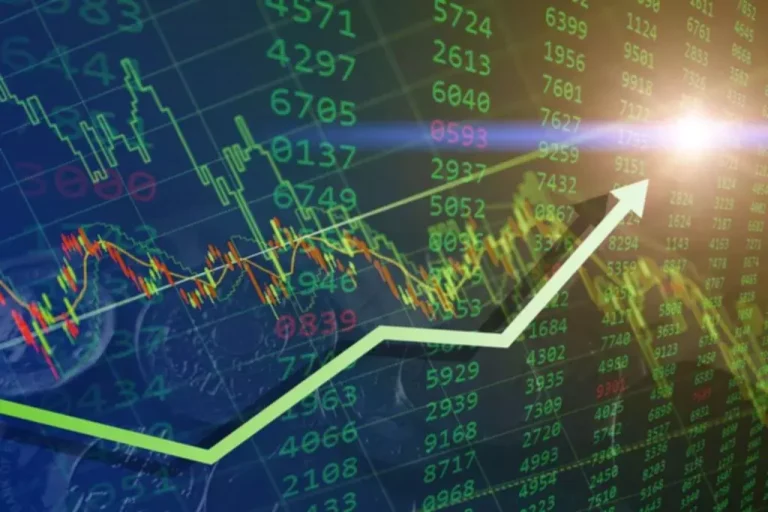Content
While both approaches have strengths and weaknesses, investors can use them together to achieve better investment results. Investors can choose the approach that best suits their needs by considering their investment goals, risk tolerance, and time horizon. Technical Analysis and Fundamental Analysis are two different approaches to analyzing and evaluating securities in financial markets. Following are the critical difference between fundamental and technical analysis differences between Technical Analysis and Fundamental Analysis. For example, a buy signal based on a chart pattern from decades past may no longer be valid or have a high chance of success today, given how much markets have changed. For example, a reversal candlestick pattern or MACD crossover signals a trend reversal early.
What Are The Similarities Between Fundamental Analysis And Technical Analysis Traders?
However, while high data volume tolerance can improve output accuracy, it can increase resource requirements and decrease model speeds. To start building exciting programming skills and Proof of space trying random forests, you can take top courses, Specializations, and guided projects on Coursera. Consider the Machine Learning Specialization from Stanford and DeepLearning.AI for a beginner-level introduction to machine learning models. When choosing random forests, you reduce the risk of overfitting, a common issue with single decision trees. By averaging the predictions of multiple trees, random forests aim to prevent the model from becoming too closely aligned with the training data.
What is Agile Software Development?
A falling wedge in an uptrend is indicative of a potential uptrend continuation, but a rising wedge in an uptrend may signal a potential trend reversal. In a downtrend, a rising wedge indicates a possible downtrend continuation, while a falling https://www.xcritical.com/ wedge may mean that the downtrend is coming to an end. So the Kagi chart doesn’t need a box size, but the reversal amount must be specified.
What is your current financial priority?
For example, as a risk analyst, you might use machine learning and random forest algorithms to develop credit risk models, calculating the probability of a borrower defaulting on a loan. As a fraud analyst, you might use random forest models to flag fraudulent activity in transaction data. Random forests are one of the most widely used machine learning algorithms because they can handle classification and regression problems effectively. However, despite their strengths, random forests can be resource-intensive, requiring significant computational power and memory, especially as the number of trees grows. Effective technical analysis isn’t straightforward and can sometimes require a deeper understanding of financial terms and some trading experience. One of the underrated advantages of technical analysis is its applicability to various asset classes, not just cryptocurrencies.
What Are The Disadvantages Of Fundamental Analysis?
- The chart can be great for trading price breakouts, but you will need a lot of practice to understand how it works.
- Fundamental analysis is used in stock valuation to determine its fair value against its current price.
- Fundamental analysis assesses the present and expected economic performance of countries to determine the intrinsic strength of currencies.
- Yes, fundamental and technical analysis can be used together with Forex brokers.
- However, it does not provide insights into a company’s financial health or future potential and is susceptible to false signals.
- Fundamental analysis in investment management is accomplished in two ways, top-down, and bottom-up approaches.
- But you should know that past performance is not always indicative of future performance.
Additionally, reliance on historical data and patterns doesn’t account for sudden changes in market sentiment or unexpected developments. Since there are different methods of analyzing data in technical analysis, it is always open to interpretation. Two individuals can look at the same charts and see two different patterns, both of which can have logical support and resistance levels that justify the positions.
The effectiveness of technical analysis depends on the strength of the underlying trend and the trading strategy employed. Technical analysis is more effective when it is used in conjunction with other analysis strategies. Technical analysis affects swing trading by providing trading tools, such as custom indicators for swing trading, promoting divergence analysis, and discerning market cycles. Technical analysis enables swing traders to increase their chances of capturing profitable price swings.
Fundamental and technical analysis differ in the type and amount of data required to make investment decisions. Technical analysis utilizes historical data which may be redundant because of sudden economic changes that affect market conditions. Fundamental analysis relies on extensive data sources to offer a wide range of risks and opportunities.
Technical analysis is ideal for short-term trading, which is common in the crypto world. The approach excels in analyzing immediate price action and volume, enabling traders to profit from short-lived trends, especially beneficial in a highly volatile market. The type of asset being analyzed causes accuracy differences between fundamental and technical analysis. The study found that technical analysis carries more weight during a crisis in the markets. Technical and fundamental analysis are best used together or interchangeably in specific circumstances as the study concludes.

Technical indicators in technical analysis, such as the Average True Range (ATR) help traders assess whether the market is experiencing high or low volatility. High volatility means larger price swings that present more trading opportunities but greater risk. Low market volatility suggests a market in consolidation where price movements are more muted. Traders adjust their risk management strategies, such as placing wider or tighter stop-loss orders depending on market conditions by understanding volatility using technical indicators.
The usual limitation, that the traders face in Technical Analysis, is the mixed signals that they receive from different technical indicators. One indicator will suggest buying, whereas the other indicator may suggest selling. In order to combat this issue, some traders prefer a blending of technical indicators, structures, volume, and moving averages to determine the entry and exit point. Technical Analysis provides a trading toolkit to analyze price trends, spot opportunities, determine entry/exit points, set stop losses, and gain insights to complement fundamental Analysis. While functional, technical Analysis alone has limitations due to the complexity of market forces driving stocks. When combined with fundamentals, the technical Analysis offers a more comprehensive view of potential price action.
So, some traders use a combination of technical indicators, patterns, volume, and moving averages to determine the entry and exit point. Technical analysis impacts stock trading by providing traders with a wide range of tools and techniques to create diversified trading strategies. Diversification strategies include trend-following, momentum-based, and mean-reversion approaches that are suited for different market conditions.
Using technical and fundamental analysis together on a Forex broker platform enhances decision-making. Forex platforms offer traders the ability to use insights from both approaches together to maximize their trading results and capabilities. The higher the volume during a price movement, the more confident technical analysts are that their predictions of a price direction are viable. Lower volumes suggest a weak or temporary price change before the assets regain their original price level.
This manipulation can distort technical indicators, leading traders to make ill-advised decisions based on what appears to be a strong buy or sell signal. Market sentiment, news events, and economic indicators often play a role in asset prices, none of which are adequately considered in a purely technical framework. For instance, a sudden regulatory announcement can drastically affect a cryptocurrency’s price, catching traders off guard if they rely solely on technical analysis. Technical analysis relies heavily on backtested data to validate trading strategies.
Volume analysis helps investors and traders make correct market entry decisions. Forex traders using fundamental analysis understand geo-political events, their impact on currency values, and how they affect market sentiment. Information on elections, economic data releases, and changes in government policies influence the value of currencies and the decisions of Forex traders. Market sentiment determines price movements in the Forex markets, which makes fundamental analysis an essential tool for every Forex trader.
To identify these moves, you should know that they occur after a prolonged trend. After an exhaustion move, there is usually a decrease in volume in the days and weeks that follow. The S&P 500, which measure the broad market performance, tends to perform better in certain months of the year than others.









